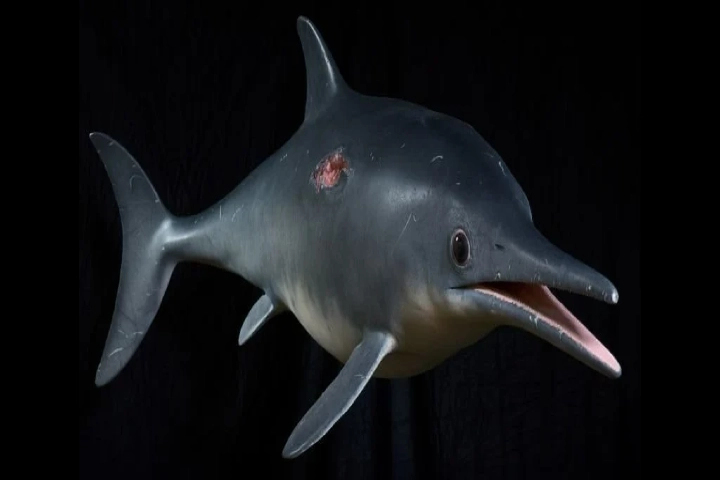It takes a lot of creativity, imagination and solid research to be able to rebuild a creature from antiquity. This is what happened as per sciencealert.com report when a thorough study of 300 years of research and well-preserved fossils yielded a complete up-to-date reconstruction of an ancient beast – ichthyosaurs or fish lizard — which lived and flourished 160 million years ago.
Contemporary of dinosaurs in the Mesozoic period, these marine reptiles lived, swam and preyed in the oceans of the Earth. Bearing resemblance to dolphins, the fossil evidence of these animals is rich.
With the palaeontologists uncovering preserved soft tissues of these creatures, they have been deriving more data and information about their looks and appearance, which helped them to comprehend their way of living.
The work of gathering and examining all the previous study and research on ichthyosaurs was done by palaeontologist Mats Eriksson of Sweden’s Lund University and his team.
In their paper the researchers wrote: "Herein, we present a review of ichthyosaur research and lifestyle iconography with particular focus on soft-tissue structures and inferences made from these, including aspects of coloration and thermoregulation."
Details of the study have been published in Earth-Science Reviews.
The scientists zoomed in on a particular fossil which had been found in the Posidonia Shale, Germany’s Lagerstätte fossil assemblage. Being a virtually complete specimen of the Jurassic period, this helped analysts to determine what the fish lizard appearance and way of life was.
Sharing details, Johan Lindgren LU’s palaeontologist observed: "Our reference point was a fish lizard that was found in Holzmaden, Germany. This fossil has previously been the subject of an extensive study on the biology and coloration of fish lizards, which I did together with Mats and several other colleagues, and was published in Nature."
With plenty of fossils and past research, the research team got Esben Horn artist on board to create a life-sized reconstruction of Stenopterygius quadriscissus – an ichthyosaur species – discovered in the Posidonia shale.
Also read: Fossil of ancient Jurassic period’s largest flying reptile unearthed in Scotland
Taking a year and working by clay sculpting and 3D printing, the reptile turned out to be with smooth skin much like the leatherback turtles, a species of current times. The past studies had come to the inference that the scales on these creatures like other marine reptiles had vanished during their evolutionary move to the ocean.
The reconstructed image looks as if it is safeguarded by a layer of fat proof of which was present in a German Stenopterygius fossil. The purpose of this thick layer of fat must have been to protect ichthyosaur from frigid temperatures.
Melanosomes too have been found in the fossils of Ichthyosaur. These are cellular organelles which have dark pigment allowing protection from ultraviolet radiation. Besides, the tiny teeth were also found in the fossilized ichthyosaurs.
Also read: 180 million-year-old 30-feet dragon fossil found in UK
What this representation signifies is the meeting of science and art that culminated in a portrayal of an ichthyosaur. Even though there is a possibility that new and more information may be found in the future, the researchers don’t visualise any major change.
Airing his views on this, Eriksson observed: "Our reconstruction is the scientifically most modern, and hopefully correct, interpretation of what these animals looked like. It will be valuable for students and researchers who want to learn more about the iconic fish lizard."




















